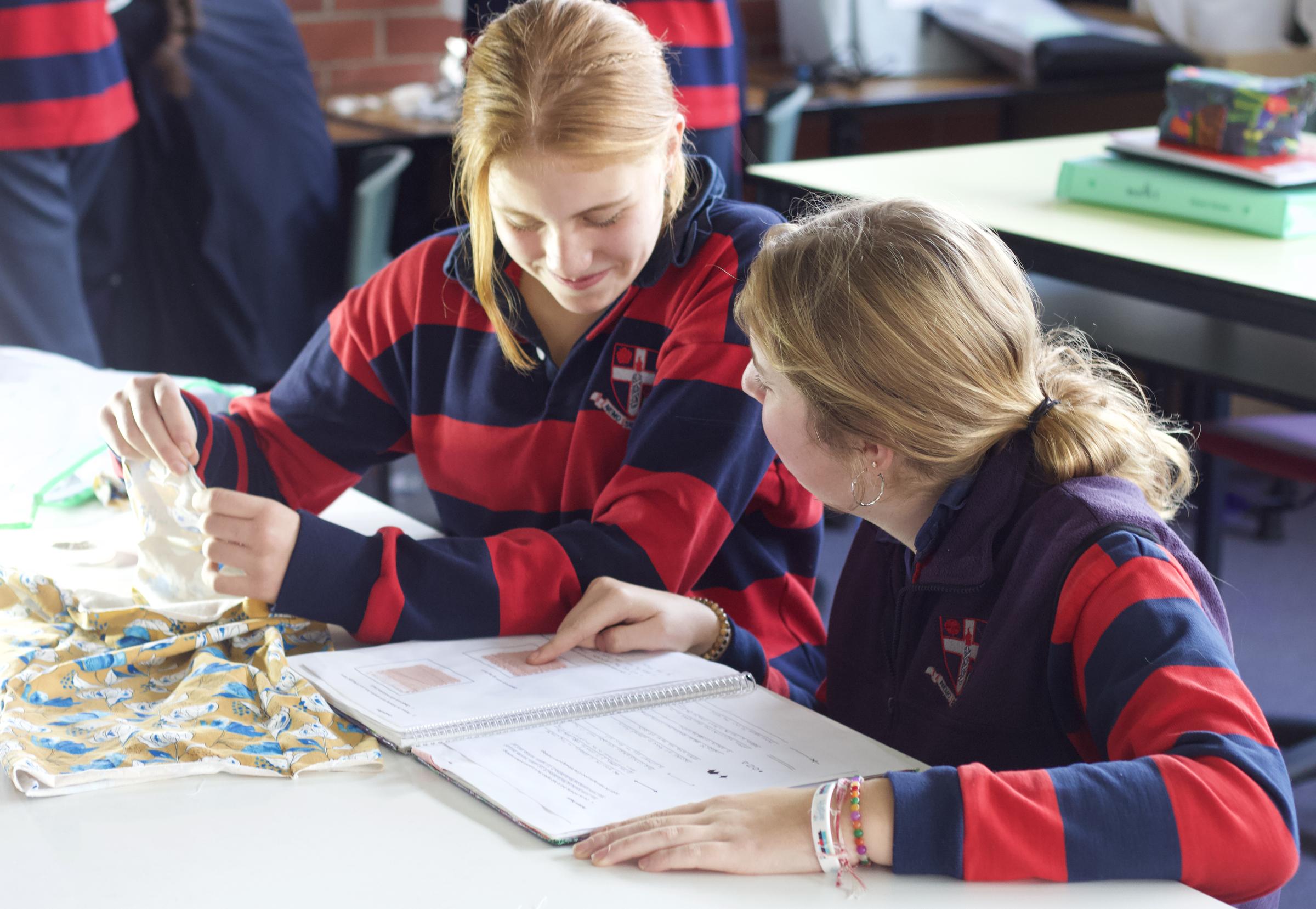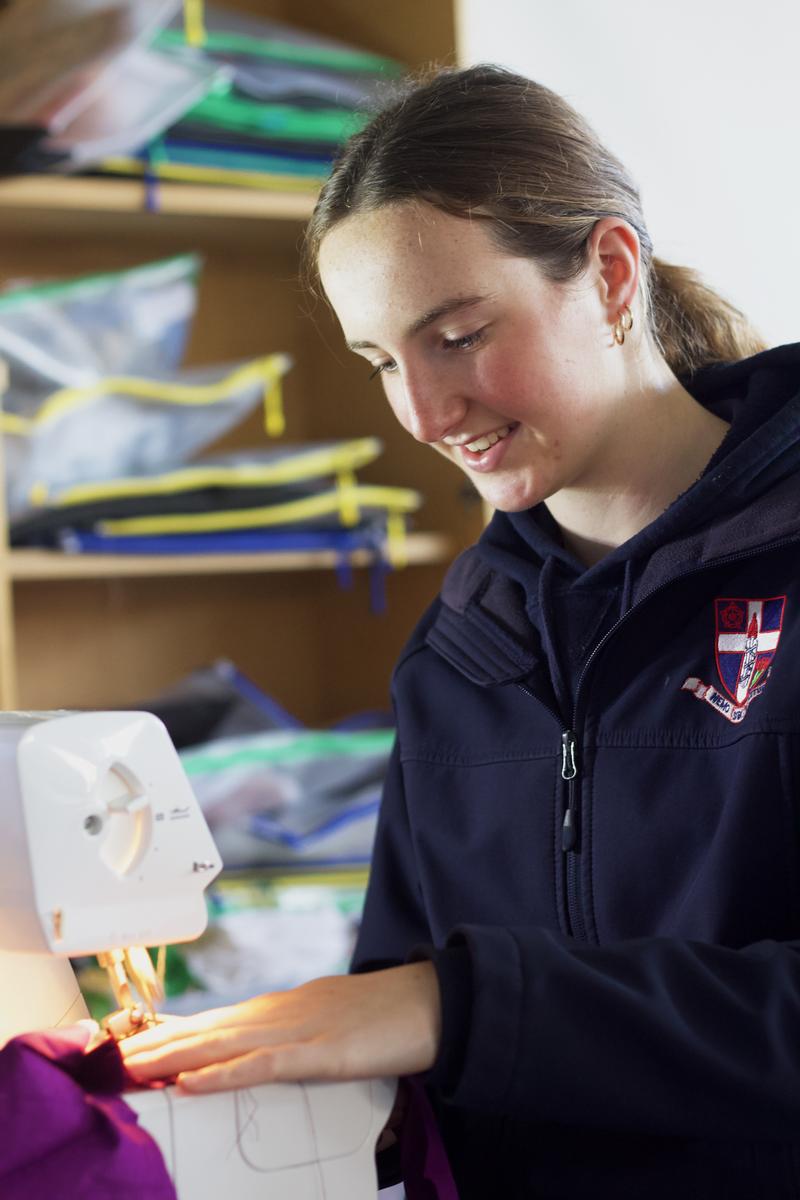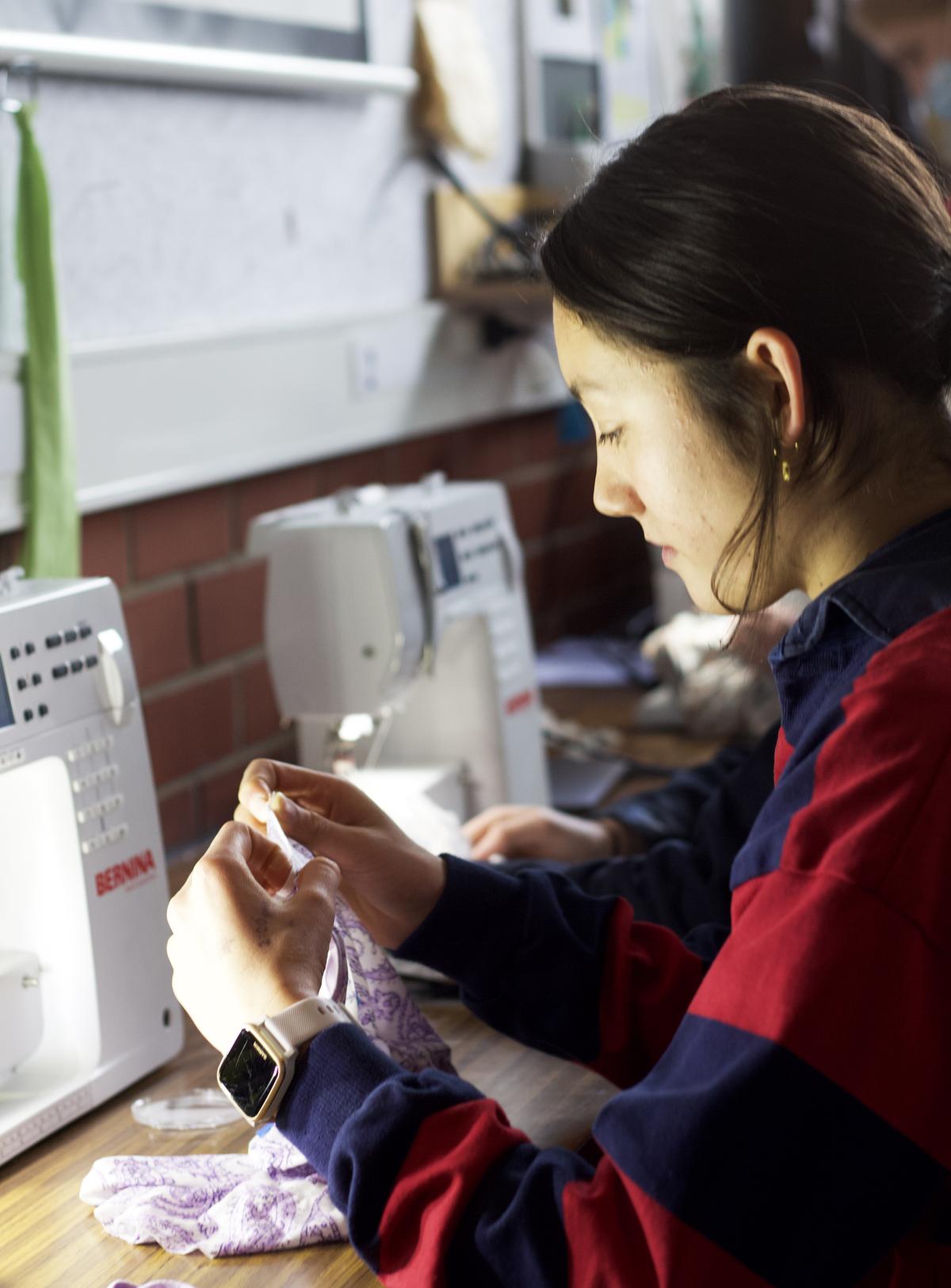Textiles
TECHNOLOGY FACULTY

Textiles
TECHNOLOGY FACULTY
| 🎓 Course Type | Elective |
|---|---|
| 🧩 Units | 1 - 4 |
| 🗓 Timing | Semester 1: Textiles 1 (Year 9) and Textiles 3 (Year 10) Semester 2: Textiles 2 (Year 9) and Textiles 4 (Year 10) |
| ⏱ Hours per week | 3 |
| 📚 Prior Experience | Not required. |
| ✏️ Selection | Possible to commence study with any of the above units. |
| 🧭 Future Pathways | Design and Production/Textiles; UTAS Connections Program - Object Design/Textiles |
Students who choose to study Textiles can complete two units per year. The four units in each course may be taken sequentially to form a two-year course.
In all units, students will undertake a range of practical projects to further develop existing construction and design skills and many opportunities will be provided to explore and develop creativity. Basic skills and knowledge are extended beyond the Year 8 level.
In Textiles, efficient construction techniques are taught and students work from a Design Brief that encourages them to plan their own learning and skill development.
These units focus on developing process and production skills, alongside fundamental design elements. Students will undertake practical, guided projects designed to build strong construction skills using both hand stitching and machine sewing. Projects may include creating a pin cushion, a book or journal cover, a zippered purse, a lined bag, and an item of clothing such as pyjamas, shorts, or a skirt. Students will also learn about fibres, yarns, and fabrics, and will be introduced to commercial patterns and decorative embellishment techniques, including appliqué, stencilling, and fabric dyeing.
These units emphasise process, production, and creative design development. Students will explore a variety of textile projects, which may include patchwork, soft toys or teddy bears, and garments such as a hooded jumper or track pants, using commercial patterns. Students will learn a range of embellishment techniques that may include fabric dyeing, decorative and free-motion machine stitching, hand stitching and embroidery, beading, and working with felt. Students will also explore textile repurposing, gaining an understanding of slow fashion and an opportunity to apply slow stitching practices to create new items from old materials.
Practical projects could include book/journal covers; patchwork, using commercial patterns, soft toys/teddy bears; and/or wearable art pieces. Students will develop an understanding of slow fashion and create a work using slow stitching practices.
Assessment is based on each student’s achievement in the theoretical and practical aspects of the subject as well as their ability to work independently and in a group situation.



